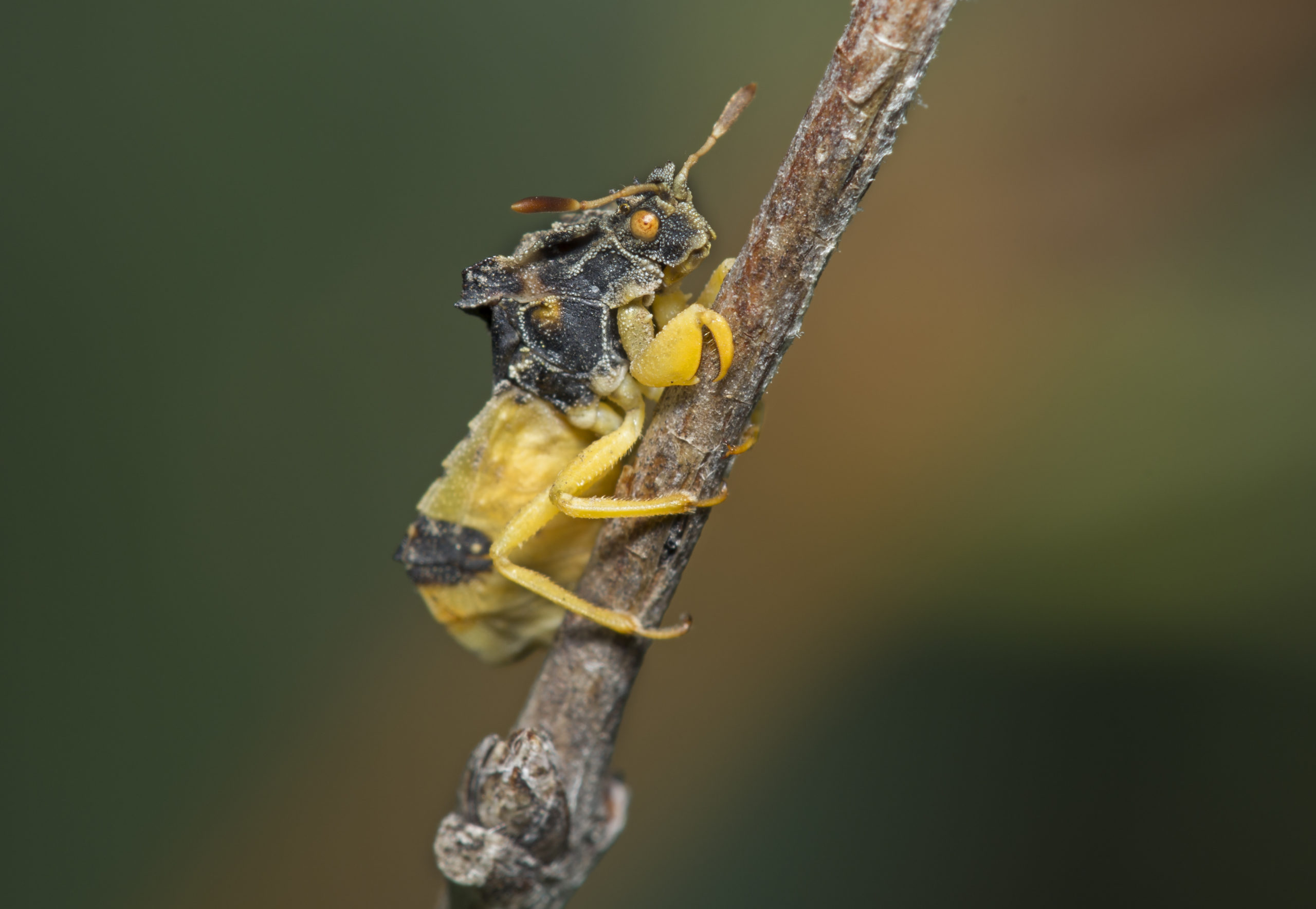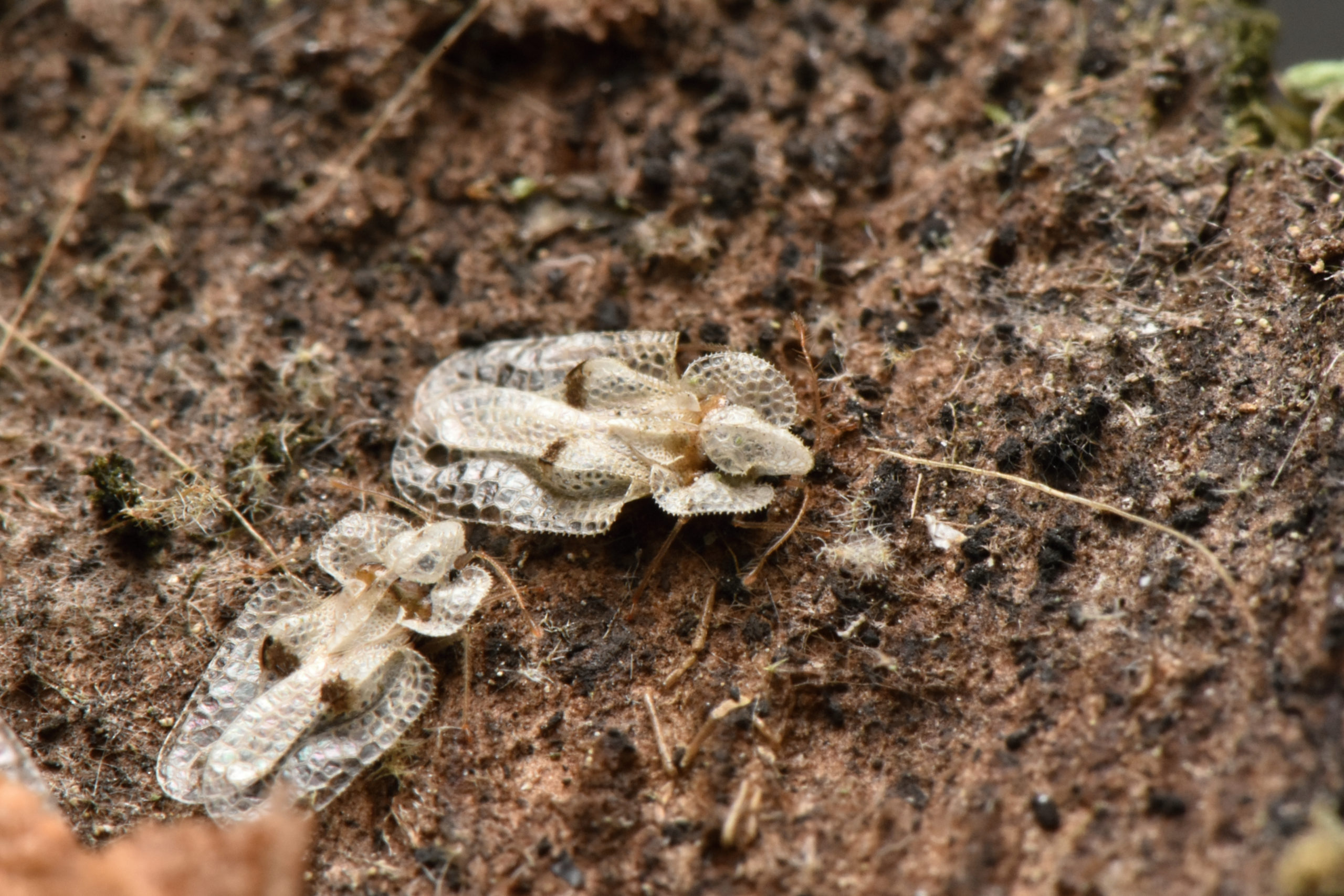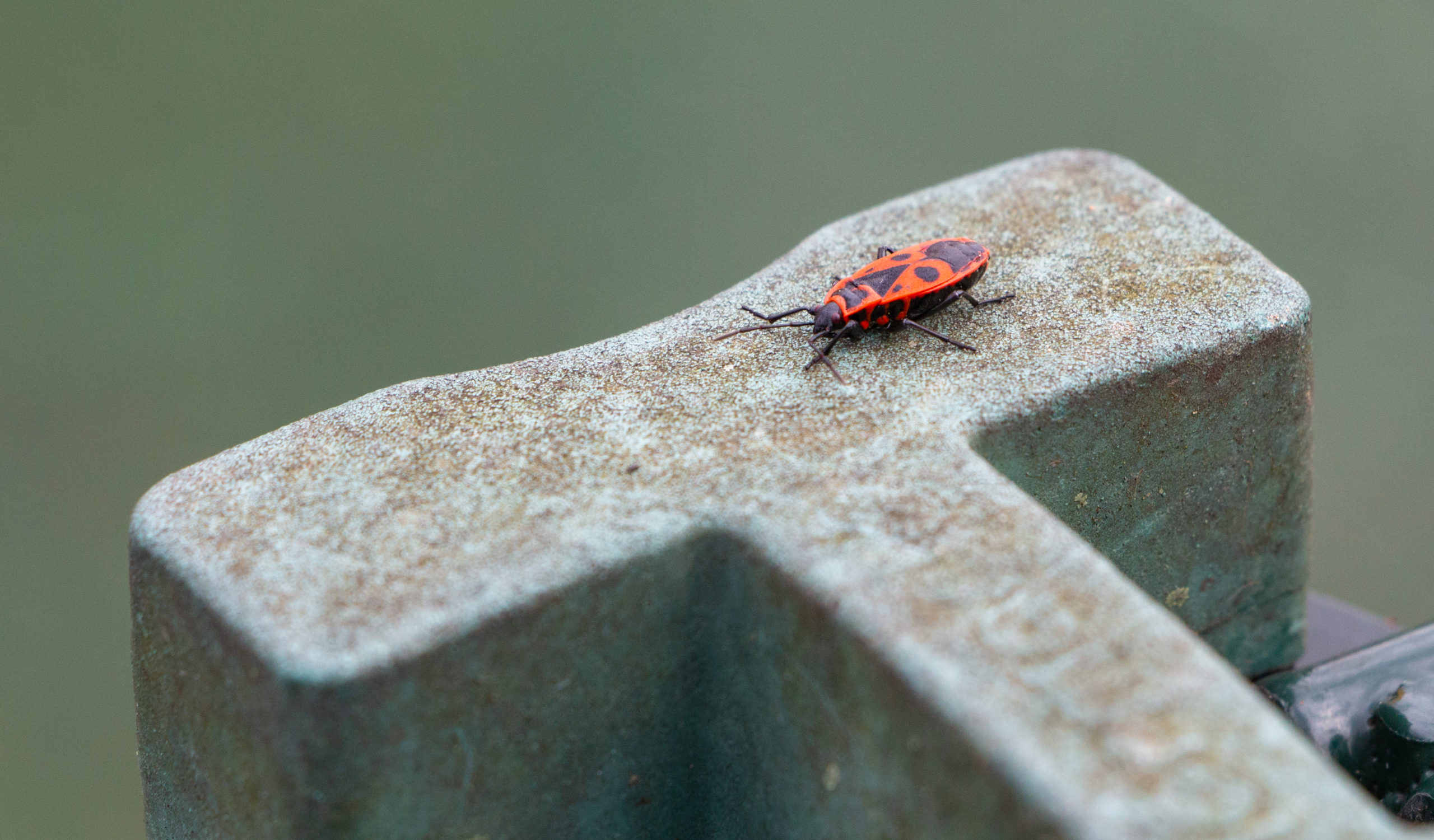What Kind of Insect is That!? – Part 4
What Kind of Insect is That!? – Part 4
In this blog series, we look at some very odd insects that you may encounter in Illinois. In this first blog, we explore: Ambush Bugs, Lace Bugs, and Box Elder Bugs.
Ambush Bugs
These bugs are the cousins of assassin bugs but, instead of hunting their prey in a stalking fashion, ambush bugs… well… ambush their prey. They are also smaller and more compact than assassin bugs, and have a pair of “grabbing” forelegs called raptorials similar to those of the praying mantis that they use to capture and hold their prey. Their diets consist of a variety of other insects as well as some arachnids There are roughly 300 different species of ambush bugs in existence and are in the family Reduviidae, which is distinguished by unique short beaks with three segments. They are stout in shape and have blotchy patterns on their backs of either yellow, orange, red, or black. While ambush bugs can be somewhat helpful as they consume other pests, they’ve been known to deliver very painful bites and, as such, should be avoided if you come across them. 
Lace Bugs
Lace bugs are garden-based pests that can create stippling, or spotted marks of discoloration on the leaves of plants. This is because lace bugs consume the nectar and fluids from their preferred host plants and, while the damage may be unsightly, it is unlikely that they will significantly harm or kill the plant. These preferred host plants of lace bugs actually depend on the particular subspecies of lace bug. For example, Hawthorn lace bugs like to feast on hawthorn, or course, but will also consume other closely related plants such as pyracantha, cotoneaster, and Japanese quince. On average, lace bugs are about 1/8 – 1/2 of an inch in length, and 1/16 of an inch wide. Depending on the sub-species, they can be brown, black, or even practically transparent in color. Their wings possess the lace-like appearance that gives them their name, and are held flat against their body while at rest. Typically, lace bugs can be found on the underside of leaves and are far more likely to be abundant on plants that are exposed to sunlight (as opposed to being hidden in shade). Thankfully, these little insects are not considered typical pests and can often be eliminated by simply spraying any infected plants with water. 
Box Elder Bugs
Unlike the other two insects on this list, box elder bugs are actually very common Illinois pests, however, we find that a lot of people either still don’t know about them, or don’t know much about them. So named for their favorite treat – box elder trees – these bugs are roughly ½ inch in length and are easily distinguished by the bright red markings along their black backs. They do not reproduce indoors but are frequently on the search for shelter and will be determined to enter your home any way they can. Although they do not damage the integrity of your home like carpenter bees or termites do, box elders can still spoil the furniture around your home. These pests frequently produce dark-colored droppings which, if done on light furnishings or walls, can leave undesirable spots on these surfaces. The most effective way to reduce your chances of a box elder infestation is by conducting minor exclusion work. This means sealing any small cracks and holes along your exterior walls that the bugs may crawl through to enter your home. You can also call us for preventative treatments which are applied around your home’s exterior to discourage the bugs from even landing on your siding. 
Citations
Ambush Bug (no date) Colorado State University – Colorado Insect of Interest. Available at: http://www.wci.colostate.edu/Assets/pdf/CIIFactSheets/AmbushBug.pdf (Accessed: 2021). Cloyd, R. (2016) Lace Bugs: Nothing to Worry About?, Kansas State University – Extension Entomology. Available at: https://blogs.k-state.edu/kansasbugs/2016/06/29/lace-bugs-nothing-to-worry-about/ (Accessed: June 16, 2021). DeAngelis, J. (1998) Box Elder Bugs, Oregon State University. Urban Entomology. Available at: https://entomology.oregonstate.edu/sites/agscid7/files/entomology/Box_Elder_Bug.pdf (Accessed: April 2020). Frank, S. (2019) Lace Bugs, NC State University Extension Publications. Available at: https://content.ces.ncsu.edu/lace-bugs (Accessed: June 16, 2021). Hoover, G. A. and Jacobs, S. (2011) Boxelder Bug, PennState College of Agricultural Sciences. The Department of Entomology. Available at: https://ento.psu.edu/extension/factsheets/boxelder-bug (Accessed: April 2020). Newton, B. (2006) Assassin Bugs & Ambush Bugs of Kentucky, University of Kentucky Department of Entomology. Available at: https://www.uky.edu/Ag/CritterFiles/casefile/insects/bugs/assassin/assassin.htm (Accessed: June 16, 2021). Raupp, M., Traunfeld, J. and Sargent, C. (2021) Ambush Bugs, University of Maryland Extension. Available at: https://extension.umd.edu/resource/ambush-bugs (Accessed: June 16, 2021).
Request a Free Quote Today
(We do not share your data with anybody, and only use it for its intended purpose)


